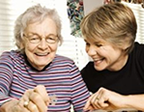renewal cycles. Complete
some now & some later.
and Get 25% off
the Total price!
Buy 3 Courses
and Get 30% off
the Total price!
Buy 4 Courses
and Get 35% off
the Total price!
| Create Account | Login | ||

Section 2
CD Track #2 - The Facing, Accepting, Floating, & Letting Time Pass Techniques
Table of Contents | NCCAP/NCTRC CE Booklet
Read content below or listen to audio.
Left click audio track to Listen; Right click to "Save..." mp3
On the last track we discussed detecting and exposing anxiety. We discussed three techniques you can use to help your client detect and expose anxiety. The three techniques on this track were analyzing and attacking anxiety by discussing the costs of anxiety, cognitive therapy, and clearing roadblocks to change.
On this track we will discuss treating phobic conditions. As you know, attempts to treat phobic conditions tend to reflect established methodologies of various health care specialties more than they have addressed the complexity of phobias. I find that the basis for treating phobic conditions in a therapeutic setting often involves providing clients tools which they can use in everyday life to cope with phobias.
![]() Claire Weekes’s Self Care Approach
Claire Weekes’s Self Care Approach
Therefore, this track will briefly outline Claire Weekes’s Self Care Approach. Weekes’s Self Care Approach is comprised of four concepts for coping with phobic conditions. Weekes’s four concepts are face, accept, float, and let time pass. As you listen to this track, consider your approach to helping clients cope with phobic conditions. How is your approach different? In what ways is your approach similar?
First, let’s discuss Claire Weekes’s Self Care Approach. For more than 30 years, physician Claire Weekes has pioneered the idea of giving self-care tools to those who suffer from agoraphobia. Her books, which show great understanding and empathy for those suffering from agoraphobia, have brought hope and help to hundreds of thousands of readers in Great Britain, Australia, and the United States. Weekes’s self care approach is applicable to most phobias. She describes her treatment in the following way:
“My treatment is based on first, adequate explanation to the patient of sensitization and nervous symptoms and secondly, on teaching the importance of the four concepts—facing, accepting, floating, letting time pass—and finally, on full explanation of the obstacles met during all stages of recovery and warning of the probable occurrence of setbacks and their treatment. Working this way, many patients need little or no drug therapy. Recovery lies, not in the abolition of nervous sensations and feelings (as so many patients believe), but in their reduction to normal intensity.
The four concepts in more detail are:
a. Face—do not run away;
b. Accept—do not fight;
c. Float—do not tense;
d. Let Time Pass—do not be impatient with time.”
Do you agree with Weekes’s position on nervous sensations and feelings and with the importance she places on keeping her clients fully informed about the obstacles and setbacks that are part of the recovery process? Behaviorally, the four concepts constitute a useful self-care technique for coping with the experience of panic and anxiety. Facing, accepting, floating, and letting time pass are steps which can establish conditions in which desensitization can occur.
The first concept outlined by Weekes, facing, is a skill that may take some time to acquire. Of course, as Weekes makes clear, what clients learn to face are arising thoughts and feelings, not locations or situations themselves. Should a client like Greg retreat from a feared situation instead of facing it, it can benefit him to see his behavior in terms of learning a new skill, not in terms of a life-and-death struggle.
![]() Case Study: Greg
Case Study: Greg
Greg, age 31, suffered frequent panic attacks due to a fear of spiders. When introducing Greg to Weekes’s self care approach, I stated, “If you were learning to ride a bicycle and fell off, it would be reasonable to say, ‘whoops!’ However, it would not be reasonable to say, ‘Oh, what a terrible person I am! I will never learn how to ride a bicycle!’
Another way of looking at it is that even the greatest generals have made strategic withdrawals in order to regroup and replenish their supplies.” Greg responded, “So I face it if I can, withdraw temporarily if I must—and don’t feel guilty about it.” Think of your Greg. How might your client develop facing skills?
Would you agree that full and complete recovery from a phobic condition can best be ensured by fitting together a self-directed treatment program that is both systematic and comprehensive? What are some differences between your approach and Weekes’s? Do you emphasize the importance of understanding the philosophy of helplessness and how it arises in the first place?
Do you feel that clients with phobic conditions, like any chronically anxious client, might benefit from becoming aware of a number of habitual self-defeating ideas and behaviors that lead to poor performance, frustration, resentment, anger, and anxiety?
On this track we have discussed treating phobic conditions. Our discussion was based on Claire Weekes’s Self Care Approach. Weekes’s Self Care Approach is comprised of four concepts for coping with phobic conditions. Weekes’s four concepts are face, accept, float, and let time pass. For more information on Weekes’s approach, consult the Bibliography which accompanied this course.
QUESTION 2
What are four concepts for coping with phobic conditions?
To select and enter your answer go to Answer
Booklet.
NCCAP/NCTRC CE Booklet
Forward to Track
3
Back to Track 1
Table of Contents
Top


